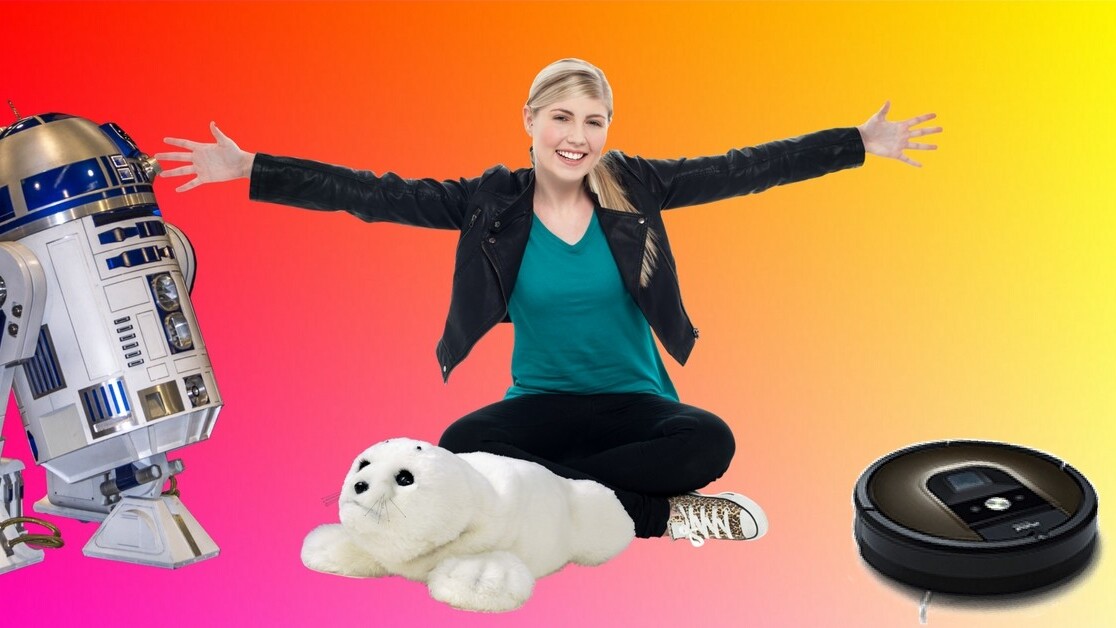
When iRobot designed the Roomba robotic vacuum cleaner, they made it round, so it wouldn’t get stuck in corners. They made it low, so it could scoot under beds and sofas.
They did not think about making it cute.
“It wasn’t designed with cuteness in mind,” says Charlie Vaida, a senior manager at the Massachusetts firm, “but with the realization that it would need to move about an ever-changing home environment.”
But cute it is, for a 3.8 kg self-moving disc. Its plaintive chirp for help when it gets stuck behind a sofa leg, and the tentative way it bangs into an obstacle a few times before turning away – a clumsy movement straight out of Konrad Lorenz’s Kindchenschema, from his 1943 paper describing the ‘innate releasing mechanisms’ that prompt affection and nurture in human beings – have an effect on customers.
“When they initially rolled this product out, they had a return policy: if something breaks on the robot, send it back, and we’ll return you a new product the same day,” says Brian Scassellati, founder, and director of Yale University’s Social Robotics Lab.
“The idea was you should be without your vacuum cleaner for as little time as possible. What they got was this huge outpouring of unhappiness: people didn’t want to send back their robot and get some other robot. They wanted their robot back. They had become attached to this thing, to the point where the idea of putting a strange robot into their homes is unacceptable.”
People also named their Roombas, a common fate for cute robots. When Catalia Health tested its robotic weight-loss coaches in patients’ homes, they returned after two months to collect them. Catalia found the patients had dressed the robots up in hats and scarves, given them names, and did not want to let their companions go.
While cuteness has long been a hook when selling dolls, purses and other consumer products, one cutting-edge area where cuteness has proven particularly vital is personal robotics.
“Absolutely,” says Scassellati. “We design educational robots for kids. We try to make them cute and attractive. That’s a very deliberate design choice, to get over the initial response: ‘Do I want to play with this thing or not?’”
Science fiction has trained us to expect robot butlers and bodyguards, but the first generation of consumer robots are filling more limited psychological roles. “Most likely the first robots in your home will not be lifting boxes, carrying groceries, washing dishes,” says Scassellati. “Instead, they’ll be doing things that involve social response: reminding you where you left your keys or to take your medication, helping you do your homework. These are tasks we can accomplish without direct physical manipulation.”
Robots right now are best at time-consuming, repetitive interpersonal tasks, and two realms where they are beginning to succeed commercially are educating small children and helping people with dementia, autism, and mental health problems. One of the most successful robots on the market is PARO, a $6,000 robotic baby harp seal found in nursing homes and psychiatric institutions around the world.
Its designer, Japanese engineer Takanori Shibata, at first thought of making PARO a robotic cat or dog – people love cats and dogs. But he realized two things. First, they tend to love either cats or dogs, so there would need to be two versions of PARO: one cat, one dog.
And second, they’ve seen cats and dogs, and thus a robotic replica, no matter how skillfully made, would fall into the ‘uncanny valley’ of artificial creatures who look just real enough to be creepy. Nobody wants to cuddle a creepy robotic dog.
Most people, however, have never held a baby harp seal, and thus they accept PARO. Its microprocessors allow PARO to bob its head, look at the person holding it, bat its long eyelashes, and coo and trill in an appealing way. In 2009, the United States Food and Drug Administration approved PARO as a Class II medical device.
The Personal Robots Group at the Massachusetts Institute of Technology (MIT) Media Lab calls devices such as PARO ‘socially assistive robots’, and cuteness is key. It consulted animators when creating Tega, a ‘learning companion’ designed to work with small children. Tega is a bouncy, furry creature. But robots can be cute without resembling living entities. Jibo, which was supposed to reach customers in April, but was held back by design glitches, is certainly cute, resembling a sleek, attentive table lamp.
“It’s not trying to be human in any way: it doesn’t have arms, it doesn’t have legs,” Cynthia Breazeal, director of MIT’s Personal Robots Group and chief scientist at Jibo, Inc., told a tech website in 2014. “It’s anthropomorphic, it’s designed to be familiar to you, but it doesn’t have to look like an animal or a real person.”
Someday, robots might be common enough that we accept them and don’t care how they look. But right now, the baby schema does the heavy work easing robots into our lives.
“It triggers this response in you. It’s automatic,” says Scassellati. “If we’ve done our jobs correctly, you don’t have to think how to respond.”
For a robot, being accepted is not the only benefit of being cute. Cuteness also causes shifts in human behavior, which cute studies researchers (read more in this Mosaic piece) are cataloging. These help today’s primitive robots do their jobs.
“When people respond, they speak more slowly, enunciate their words a little more clearly,” Scassellati says. “Things a robot has to process actually become easier.”
Another benefit: people often expect robots to perform beyond their capabilities since, well, they’re robots, and making them infantile lowers those expectations. “If the robot looks and behaves as a very young creature, people will be more likely to treat it as such,” Breazeal writes in her book, Designing Sociable Robots. That means handling it gently and – key for the time being – not demanding too much.
“We want to manage those expectations,” Scassellati says. “You don’t expect the cute puppy to be able to re-shelve books for you.”
Once robots are better at what they do, and people don’t need expectations lowered, the importance of robotic cuteness might diminish. But not anytime soon.
“The cuteness factor is likely to be there quite a while,” says Scassellati.
Read more on Mosaic: Don’t miss our pieces on care robots such as Paro and how Japan is a country conflicted by cuteness.
This article first appeared on Mosaic and is republished here under a Creative Commons license.
Get the TNW newsletter
Get the most important tech news in your inbox each week.




